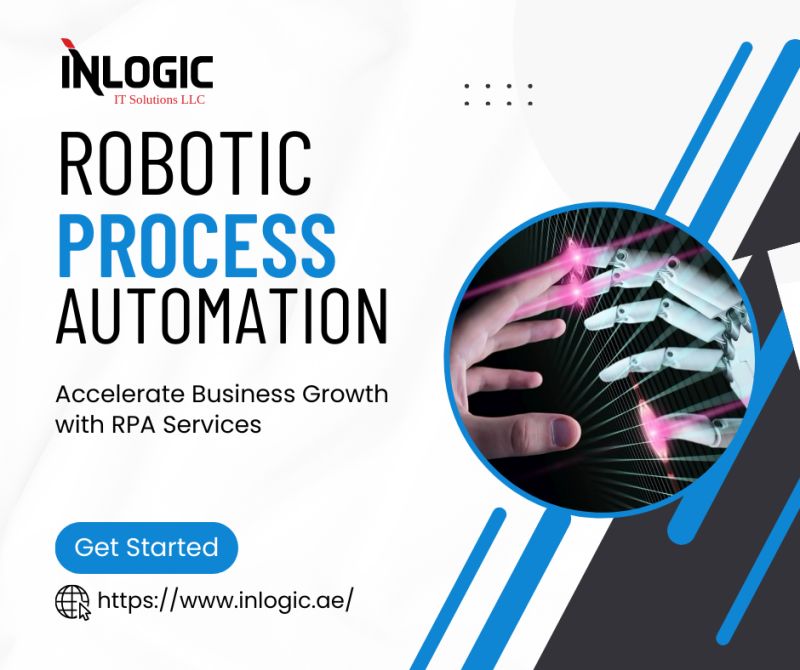Introduction
Robotic process automation (RPA) has emerged as a powerful tool for businesses to optimize their operations, reduce costs, and increase efficiency. RPA refers to using software robots to automate repetitive, rule-based tasks that human employees typically perform. These robots can perform various tasks, from data entry and invoice processing to customer service and IT support. This post will explore the benefits, challenges, and best practices associated with RPA.
Benefits of Robotic Process Automation
-
Improve Efficiency And Productivity
One of the primary benefits of robotic process automation is its ability to improve efficiency and productivity. By automating repetitive tasks, InLogic’s RPA frees employees to focus on higher-level tasks requiring human judgment and creativity. It can lead to increased productivity, faster turnaround times, and improved accuracy and consistency.
-
Cost Savings
Another critical benefit of RPA robotic process automation is cost savings. Businesses can reduce labour costs and increase efficiency by automating tasks that human employees would otherwise perform. Additionally, RPA can help reduce errors and improve compliance, saving businesses from costly penalties and legal fees.
-
Customer Satisfaction
Robotic process automation can also improve customer satisfaction by providing faster, more accurate service. For example, an RPA system can quickly process customer orders, respond to inquiries, and resolve issues without human intervention. It can lead to increased customer loyalty and retention and improved brand reputation.
-
Increased Agility and Flexibility
Another potential benefit of RPA is increased agility and flexibility. Businesses can respond more quickly to changing market conditions and customer needs by automating tasks. Additionally, RPA robotic process automation systems can be easily reconfigured or adapted to handle new tasks or processes, providing businesses greater flexibility and adaptability.
Challenges of Robotic Process Automation
It is essential to note that RPA is not a one-size-fits-all solution, and businesses should carefully evaluate their needs and goals before implementing RPA. Additionally, businesses should be prepared to invest in training, support, and maintenance to ensure that RPA systems are properly integrated and managed.
While robotic process automation offers many benefits, several challenges are associated with its implementation.
-
Selecting the Right Processes to Automate
One of the biggest challenges is selecting the right processes to automate. Not all tasks are suitable for automation; some may require significant programming or integration efforts to automate effectively.
-
Integration
Another challenge is ensuring RPA systems are properly integrated with existing IT systems and processes. It can require significant coordination and planning to ensure that data is accurately transferred between systems and that automated tasks do not disrupt other business processes.
-
Human Side Of RPA Implementation
Another key challenge is managing the human side of robotic process automation implementation. Employees may resist the idea of automation, mainly if they believe it will lead to job loss or decreased job security. Employees may also require significant training to use and manage RPA systems effectively.
Best Practices for Robotic Process Automation
To ensure successful implementation and maximize the benefits of RPA, businesses should follow several best practices. These include:
-
Identify the Right Processes to Automate
As mentioned earlier, not all tasks are suitable for automation. To maximize the benefits of RPA, businesses should carefully evaluate their processes and select tasks that are repetitive, rule-based, and require minimal judgment or creativity.
-
Plan for Integration and Scalability
To ensure that robotic process automation systems are properly integrated with existing IT systems and processes, businesses should develop a comprehensive plan for implementation and scalability. It may include working with IT staff to ensure that data is accurately transferred between systems and planning for future growth and expansion of the RPA system.
-
Communicate with Employees
To address employee concerns and ensure a smooth transition to robotic automation process, businesses should communicate openly and transparently with employees about the benefits and limitations of automation. Additionally, businesses should provide training and support to employees to ensure they are comfortable with and capable of using robotic automation systems.
-
Monitor and Measure Performance
To ensure that robotic process automation systems provide the desired benefits and deliver value to the business, monitoring and measuring performance is essential. It may include tracking key performance indicators (KPIs) such as efficiency, accuracy, and cost savings and adjusting as needed to optimize performance.
Conclusion
RPA is a powerful tool for businesses to optimize their operations and increase efficiency. By carefully selecting processes to automate, planning for integration and scalability, communicating with employees, and monitoring performance, businesses can maximize the benefits of RPA and achieve long-term success.
Inlogic Robotic Process Automation has the potential to revolutionize business operations by automating repetitive tasks, improving efficiency, and reducing costs. However, implementing RPA can also enhance decision-making processes by providing real-time data and analytics. By automating data collection and analysis, RPA systems can provide insights to help businesses make better, data-driven decisions. For example, a robotic automation process could analyze customer data to identify trends and patterns that could inform marketing and sales strategies.
